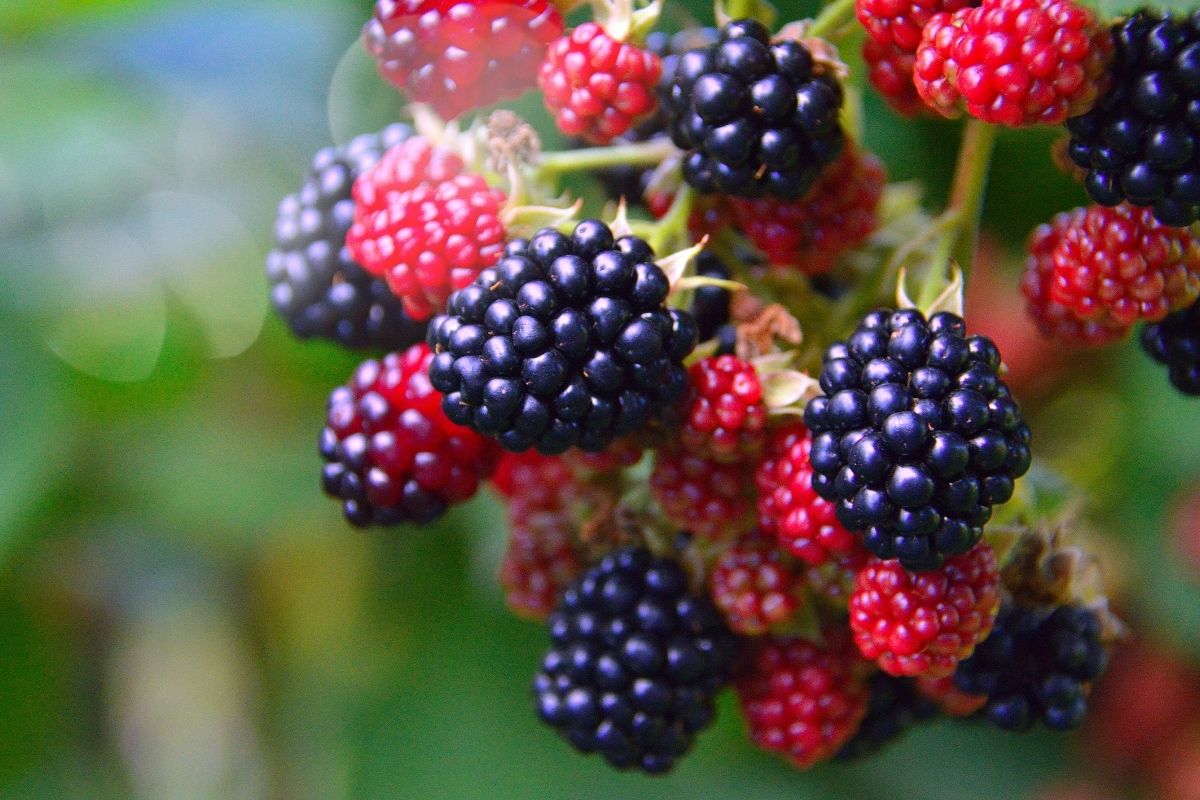
Berries and Cross-Pollination
Want to grow small fruit that is good for you and the whole family?
It’s satisfying to pick a bowl of fresh blueberries and raspberries that you grew yourself. When choosing small fruit plants for your home garden, seek out the varieties best suited to your growing region, plants that will be productive, vigorous, disease resistant and winter hardy. Once you’ve decided what you want to grow, often the next questions asked are “Is this variety self-pollinating or does it require cross pollination? Do I need to grow more than one variety?”
Florissa has the answers, as well as the tastiest varieties best suited for the Canadian climate.
Let’s start with pollination; it is the transfer of pollen from the male part (anther) of the flower to the female part (stigma) resulting in fertilized seeds. Self-pollination is when a plant can fertilize its own flowers. Some plants are self-fertile and only need pollen to transfer from the male to female parts of a flower, or among genetically similar flowers to set fruit. These plants are self-pollinating. Other plants require pollen of another variety within the same species or genus to set fruit, and cross-pollination is necessary.
Cross pollination is when the pollen of one plant transfers to a different plant for fertilization. The genetic materials of both plants combine and the seed from pollination can result in a whole new plant variety. It’s a natural process and has been happening all around us to plants of all kinds. It’s the reason we have so many apples to choose from when we visit the grocery store, and so many different berries to plant in our garden. Cross-pollination can only occur within a genus. A strawberry will not cross-pollinate with a blueberry, but a raspberry can cross-pollinate with other raspberries or even blackberries. Also, the blooming periods for the plant varieties involved need to overlap or occur at the same time.
Even though a plant variety may be self-pollinating, planting more than one variety encourages cross-pollination which can result in higher yields of larger berries.
The natural white strawberry is a variety that needs cross-pollination to successfully produce fruit. Florissa makes it easy and sells 2 natural white strawberry plants with 2 compatible pollinator June bearing strawberry plants. Planting these two varieties side by side in the garden supports successful cross-pollination. When planting strawberries, the more varieties available for cross pollination the better.
Most northern high bush blueberries are self-pollinating, but cross pollination is beneficial for the crop. The bell pendant shaped blueberry flower tends to discourage pollination via wind or gravity. Additionally, the male and female parts of the blueberry flower mature at different times. Buzzing bees – especially bumble bees and wild bees – are the most effective insects for blueberry pollination. The rapid vibration of their flight muscles creates the buzzing sound we hear, and when in contact with the flower, these buzzing bees free and carry pollen.
High bush blueberry varieties benefit from this transfer of pollen. Your blueberry patch will be more productive if you plant a combination of varieties that bloom around the same time. You’ll see more berries and bigger berries. Planting two or more varieties of high bush blueberries also has another advantage: you’ll enjoy the ripening fruit over a longer season, extending your harvest.
Haskap or Honeyberries, are a world-wide species found in the northern areas and mountains of Asia, Russian, and North America. They require compatible pollen from a different variety to set fruit. Plants that are closely related to each other, or genetically similar, will not cross pollinate with each other or set fruit. When two genetically different plants with compatible pollen are planted close to each other, both bushes will set fruit. These plants must also bloom at the same time. You can purchase Florissa’s potted one-gallon haskap varieties with two compatible plants that will cross pollinate. Plant them together as they are in the pot and you’ll enjoy abundant berries season after season.
What about raspberries and blackberries, you ask? Most cultivars are self-pollinating and don’t need cross pollination. However, many gardeners plant several varieties together to extend their berry harvest throughout the season.
Comments:
Sorry, the comment form is closed at this time.



Fuad Efendi
I bought “Florissa White Strawberries” in local store, 5 in a pack, and it says exactly “W/POLLII” on the pack, with double “ii”. I had hard time to find that they mean “with pollinator”. And now I am guessing which one is pollinator, which variety, and how many!!!
I already have 5 varieties as pollinators, I don’t need anymore; and I planned to plant it in a huge pots. Now I have June-bearing pollinator(s) in pot(s).
Why it is June-bearing indeed? Pinebearing are everbearing!
Dianne
Hi Faud,
The Natural White strawberries we supply are June Bearing and yes they do need a pollinator red variety. We recommend planting them with other June bearing varieties in your strawberry patch so that the blooming times occur at the same time for successful pollination and fruiting. One June Bearing red pollinator will be enough for 5-7 Natural White Strawberries. Florissa